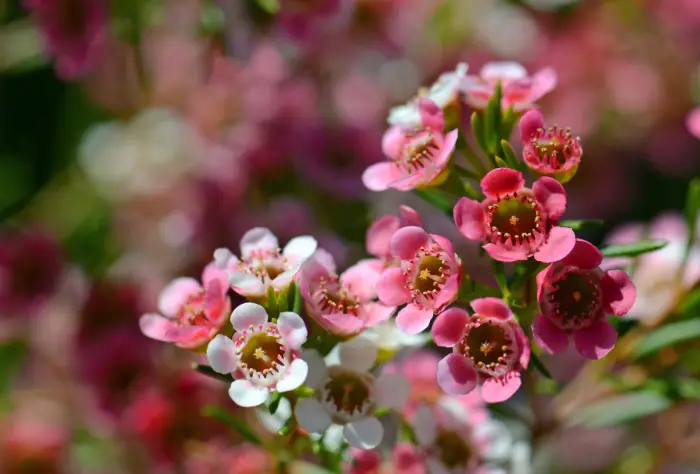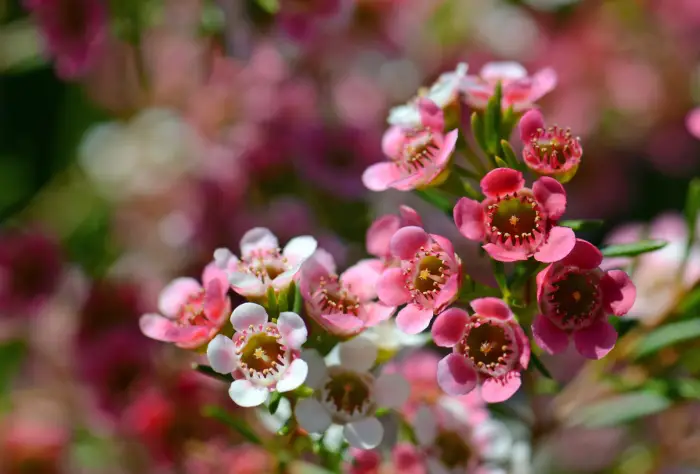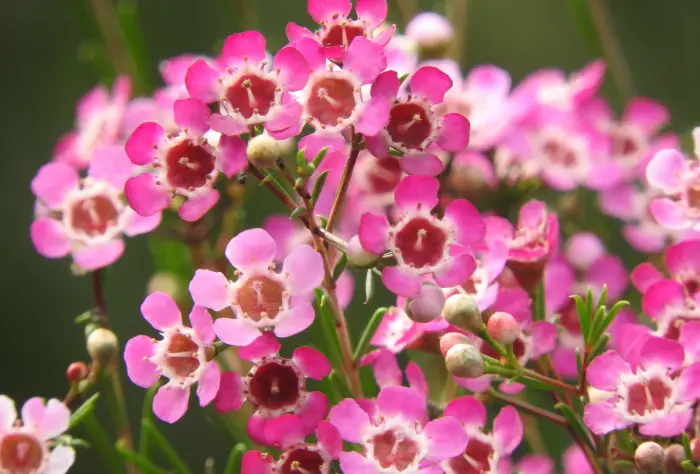Waxflower
| Name: Waxflower | Family: Myrtaceae | Type Plant: Shrub |
| Flowering time: Late winter to late spring (depending on climate) | Best time to buy: autumn | Max Height: (0.9-2.4 meters), depending on variety and growing conditions |
| Sun/Shadow: Prefers full sun but tolerates light shade |

Origin
Native to Western Australia, waxflowers thrive in dry, sandy soils and warm climates. Introduced to horticulture in the 20th century, they have since become popular worldwide, especially as filler flowers in floral arrangements.
Characteristics
Waxflowers are evergreen shrubs with small, fragrant, five-petaled flowers in shades of pink, white, and purple. Their waxy, glossy petals and needle-like foliage are durable, allowing them to last for weeks in cut arrangements. The flowers also emit a light, pleasant scent.
Care
Light: Needs full sun (6-8 hours daily).
Soil: Prefers well-drained, sandy/loamy soil.
Water: Water sparingly; let the soil dry between watering.
Temperature: Thrives in warm, dry climates; protects from frost.
Fertilizer: Light, balanced feeding in spring.
Pruning: Light trim after flowering for shape
Blooming time
Waxflowers bloom late winter to spring (February-April in the Northern Hemisphere) with long-lasting, pink, white, or purple flowers.









